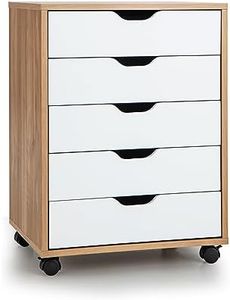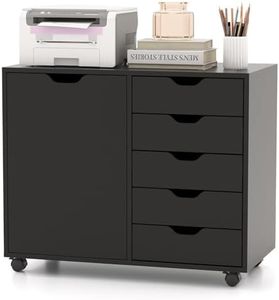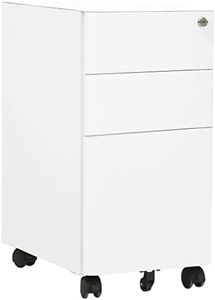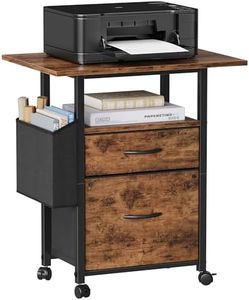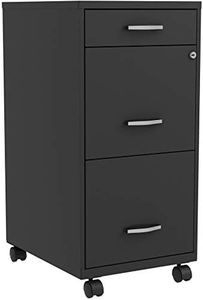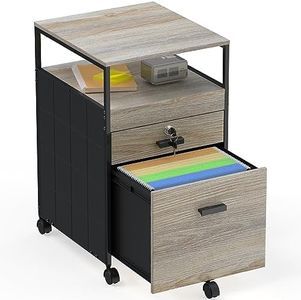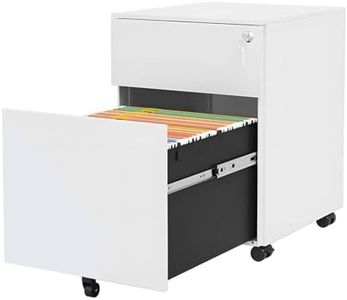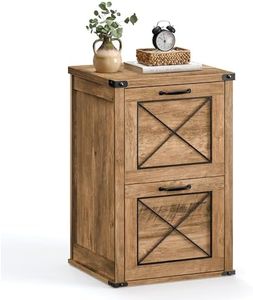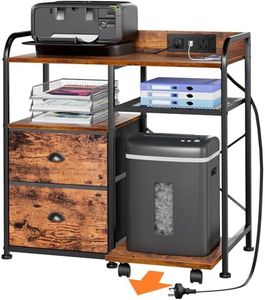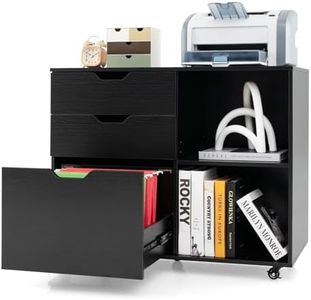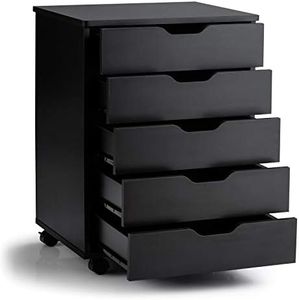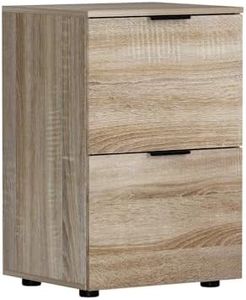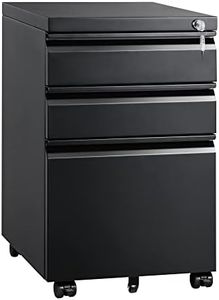We Use CookiesWe use cookies to enhance the security, performance,
functionality and for analytical and promotional activities. By continuing to browse this site you
are agreeing to our privacy policy
10 Best Filing Cabinets
From leading brands and best sellers available on the web.By clicking on a link to a third party's website, log data is shared with that third party.
Buying Guide for the Best Filing Cabinets
Choosing the right filing cabinet can make organizing and accessing your documents much easier, whether you're setting up a home office or managing paperwork at work. To pick the best fit, think about how much paperwork you need to store, how often you'll access it, and the space where you'll keep the cabinet. It's also important to consider security needs and the cabinet's durability. Understanding key features will help you select a cabinet that keeps your documents safe, organized, and easy to find.Size and CapacityThe size and capacity of a filing cabinet refer to how much paperwork it can hold and how much space it takes up in your office. This is important because overfilling a small cabinet can make files hard to access and damage them, while a too-large cabinet might waste space. Filing cabinets typically come in two sizes: letter and legal, based on the size of files you need to store. They're also divided by the number of drawers, usually two, three, or four-drawer options. For occasional, home use with minimal documents, a two-drawer model might be enough. For more extensive filing needs, such as in a busy office, three or four drawers will suit you better. Consider both your current needs and potential for future growth when picking the size.
Drawer TypeThe drawer type tells you how files are stored and accessed inside the cabinet. The two common types are vertical and lateral drawers. Vertical drawers are tall and narrow, with files stored from front to back. They save on floor space but use more vertical room and are often better in tight areas. Lateral drawers are wider and shorter, with files stored side to side, making documents easier to view all at once and providing a work surface on top. If you have limited floor space but more wall height, vertical is a good choice; if you need easier access to files and horizontal space isn’t an issue, lateral is ideal.
Material and Build QualityMaterial and build quality impact how durable your cabinet will be and how much daily use it can withstand. Filing cabinets are usually made of metal or wood. Metal cabinets are sturdier, last longer, and are better if you need to lock up sensitive files; they're common in business environments. Wood cabinets can be more stylish and blend into home decor, but aren’t as durable with heavy or frequent use. Choose metal for heavy-duty, office use or if security is a concern. Opt for wood when aesthetics and light use are your top priorities.
Locking MechanismThe locking mechanism is important if you need to keep sensitive or confidential files secure. Most filing cabinets offer some form of lock, usually a single lock for all drawers. Some have more advanced locking systems or let you secure individual drawers. If you are storing personal, financial, or sensitive documents, a reliable lock is essential. If security isn’t a major need, you may not need to prioritize this feature as much.
MobilityMobility refers to whether the cabinet is stationary or has wheels for easy movement. Cabinets with casters are helpful if you need to frequently move them or reposition them around an office, making cleaning and reorganization easier. However, stationary cabinets are more stable and secure. For a flexible office layout or shared spaces, opt for mobility; for stability and long-term placement, choose a stationary cabinet.
Fire and Water ResistanceFire and water resistance means the cabinet can protect your documents from damage in emergencies. This is crucial if you need to store irreplaceable or highly sensitive paperwork, as these cabinets can preserve files during fires or leaks. Not all cabinets have this feature, and fire-resistant models are generally heavier. Choose this option if you handle critical legal, financial, or personal records; if most of your files aren't irreplaceable, this feature may be less important.
